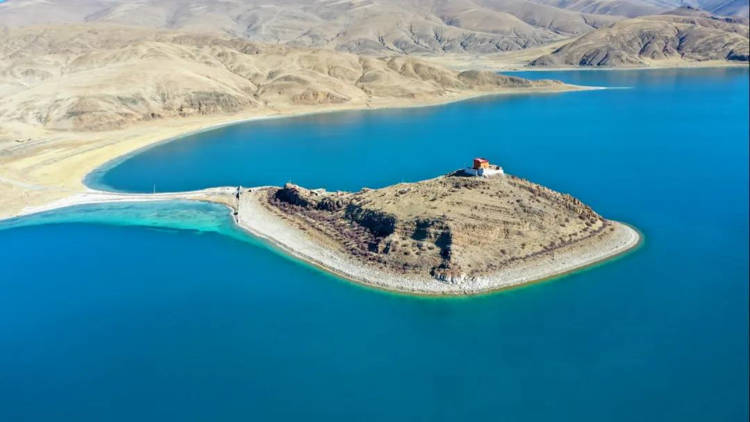Located on top of a small mound, on a sliver of land stretching into the serene Yamdrok Lake is Rituo Temple, the home of just one solitary monk who spends his days chanting sutras and meditating.
Rituo, which means “the stone on the mountain” in Tibetan, is often referred to as Tibet’s loneliest temple. It has a history that goes back more than 700 years, but it’s considered one of the country’s hidden gems, as few tourists venture out to visit it. That’s because it’s located in the middle of nowhere, on a thin patch of land stretching into Yamdrok, one of the three holy lakes of Tibet. But the few people who did visit it, tell stories about the peace and quiet that most of us only dream of, and about the surreal experience of taking in the amazing natural scenery from atop the solitary rock mound.










